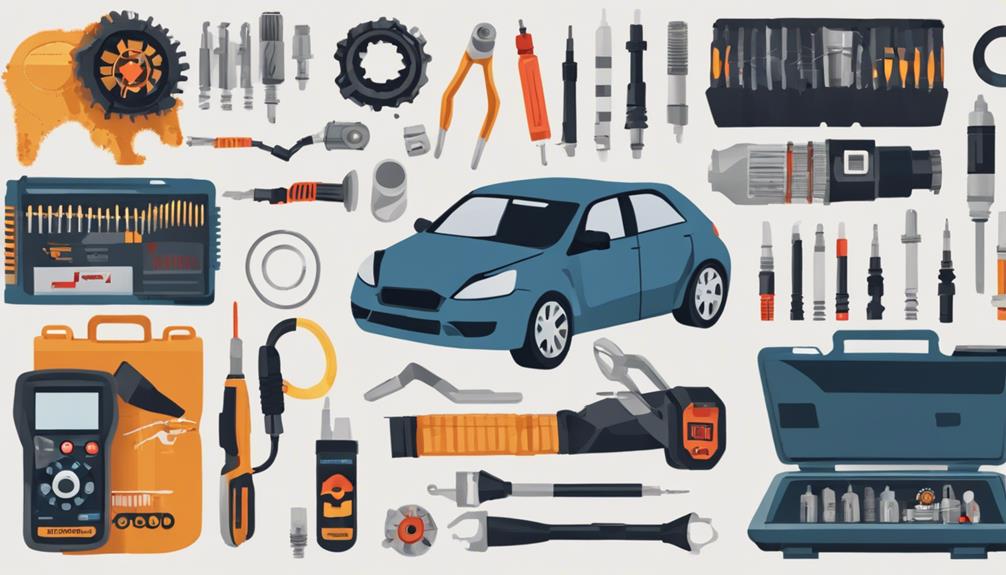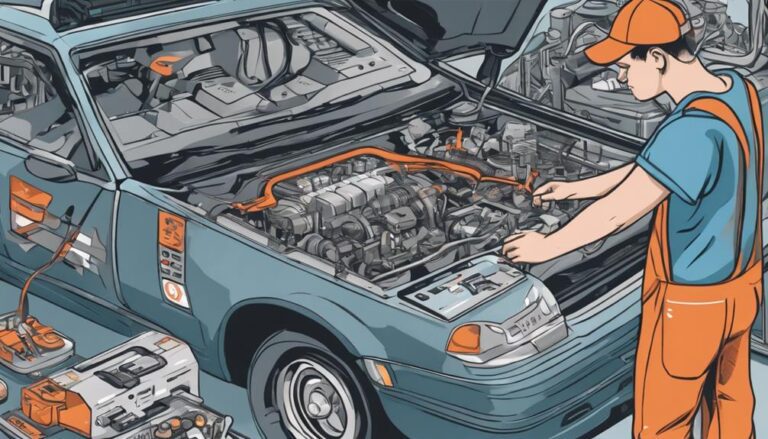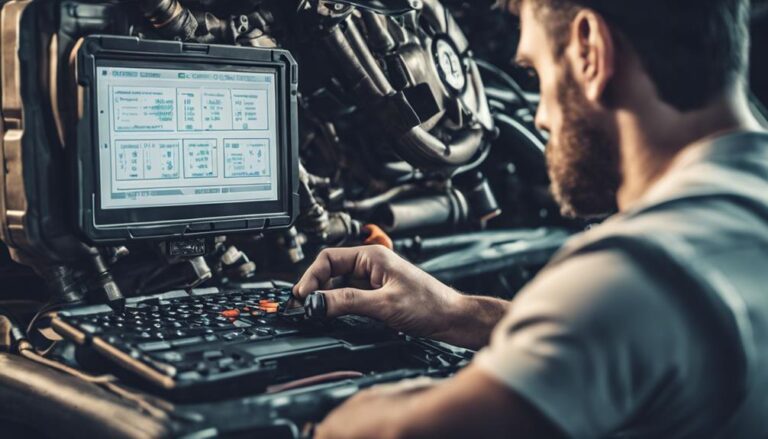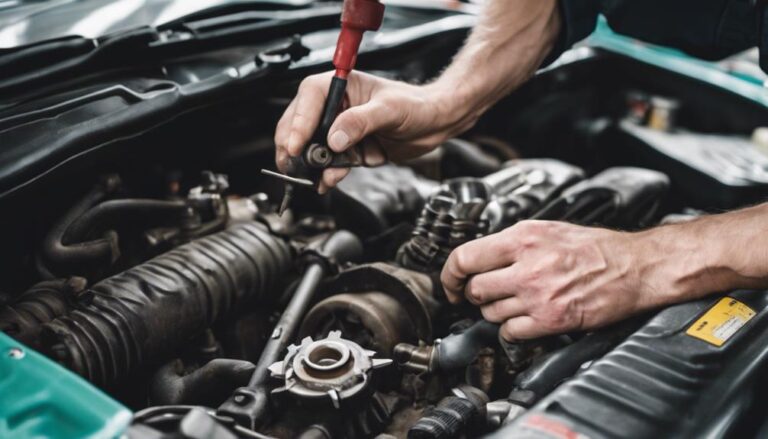What Is the Essential Engine Diagnostic Checklist?
When diagnosing engine issues, you must meticulously follow a set checklist to pinpoint potential problems effectively.
Imagine being able to identify troublesome engine symptoms and tackle them head-on with a systematic approach.
By understanding the essential components of this diagnostic checklist, you can ensure your vehicle's engine operates smoothly and efficiently.
So, what key steps should you prioritize to keep your engine running at its best?
Key Takeaways
- Regular maintenance prevents costly engine issues and ensures peak performance.
- Use diagnostic tools like multimeter and compression tester for accurate diagnosis.
- Understand DTCs to troubleshoot efficiently and identify root causes of engine problems.
- Follow step-by-step procedures to check spark, air intake, fuel delivery, compression, and timing.
Common Symptoms of Engine Problems
If you notice decreased gas mileage, rough idle, or misfiring in your vehicle, these are common symptoms indicating potential engine problems. One key component in this system is the spark plug. The spark plug is responsible for igniting the air-fuel mixture in the combustion chamber to power your vehicle. If the spark plug is malfunctioning, it can lead to issues such as rough idling and misfiring.
Another crucial element is the ignition coil. The ignition coil is what generates the high voltage needed to create a spark in the spark plug. A faulty ignition coil can cause a weak spark or no spark at all, resulting in poor engine performance.
When either the spark plug or ignition coil isn't functioning properly, it can lead to decreased gas mileage, rough idle, and misfiring in your vehicle. These symptoms shouldn't be ignored as they can indicate underlying engine problems that require prompt attention to keep your vehicle running smoothly.
Essential Tools for Engine Diagnosis
To effectively diagnose engine issues, acquiring essential tools such as a multimeter, an inductive tool, a compression tester, a timing light, and access to a Schrader valve in the fuel rail is imperative. Here's a breakdown of the diagnostic equipment you'll need for troubleshooting techniques:
- Multimeter: This tool is essential for checking sensor resistances and power to the distributor/coil pack, providing crucial insights into electrical issues.
- Inductive Tool: When spark plug boots are challenging to reach, the inductive tool becomes invaluable for checking spark, aiding in identifying ignition system problems.
- Compression Tester: Checking compression levels in the engine is a fundamental step, and this tool allows you to assess the health of your engine's internal components.
- Timing Light: Ensuring proper engine operation is dependent on accurate ignition timing, which can be precisely checked using a timing light for optimal performance.
Having these tools at your disposal will enable you to conduct thorough engine diagnostics with precision and efficiency.
Step-by-Step Engine Diagnostic Procedure
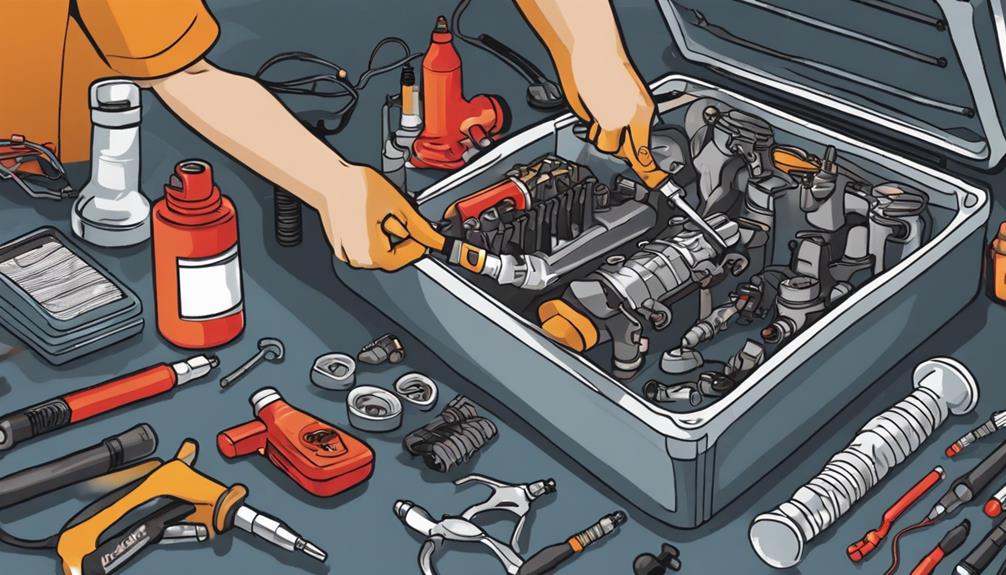
Having acquired the essential tools for engine diagnosis, proceed with the step-by-step engine diagnostic procedure to effectively troubleshoot any potential issues. Start by checking for spark using a spark plug, grounding method, or inductive tool to diagnose ignition system issues.
Verify air intake by inspecting the air filter, ducting, and listening for vacuum leaks to ensure proper air supply to cylinders. Confirm fuel delivery by eliminating issues with regulators, filters, pumps, and checking fuel pressure in the rail.
Evaluate engine compression levels with a compression tester to identify potential valve, piston ring, or head gasket problems. Check timing synchronization using a timing light or manual inspection to prevent engine starting problems caused by incorrect timing.
Understanding Diagnostic Trouble Codes (DTCs)
Understanding Diagnostic Trouble Codes (DTCs) provides crucial insights into vehicle malfunctions and aids in precise engine issue identification for efficient repairs and maintenance. When delving into DTCs, consider these essential aspects:
- DTC Interpretation Techniques
- Learn how to decipher the alphanumeric codes to understand the specific problem areas within the vehicle.
- Utilize resources such as code databases and manufacturer guides to accurately interpret the DTCs.
- DTC Troubleshooting Strategies
- Follow a systematic approach to investigate the root cause of the issues indicated by the codes.
- Use the DTC information to conduct targeted inspections and tests on the components related to the reported problems.
Importance of Regular Engine Maintenance
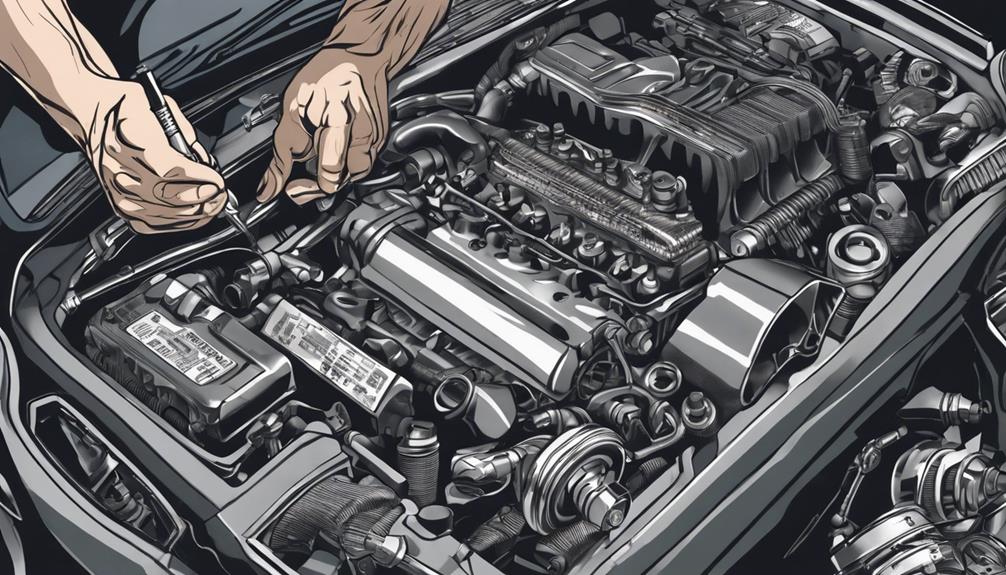
Regular engine maintenance plays a crucial role in ensuring the longevity and optimal performance of your vehicle's engine. By adhering to a regular maintenance schedule, you can prevent costly repairs and unexpected breakdowns. Engine diagnostics during maintenance help identify potential issues early on, allowing for timely intervention before they escalate. Proper maintenance not only keeps your engine running smoothly but also improves fuel efficiency and overall performance. Routine inspections are essential as they can uncover hidden problems and extend the lifespan of your engine.
Following an engine diagnostic checklist ensures thorough maintenance, addressing key areas that impact engine health. Embracing regular maintenance benefits you by keeping your engine in top condition, reducing the risk of major failures, and ultimately saving you time and money in the long run. Remember, a well-maintained engine is a reliable engine.
Frequently Asked Questions
What Is Engine Diagnostic Check?
An engine diagnostic check is a comprehensive assessment of your engine's health and performance. It involves analyzing various components to identify issues affecting engine performance. Utilize troubleshooting techniques to pinpoint problems and ensure optimal engine operation.
What 4 Things Does an Engine Need to Run?
To run efficiently, your engine needs spark, air, fuel, and compression. Spark ignites the air-fuel mixture. Air aids combustion. The fuel system must deliver consistent fuel. Compression ensures proper sealing in the cylinders. These engine components are crucial for optimal performance.
What Are the Components of Engine Diagnosis?
Wondering about engine diagnosis components? Start with ignition system and fuel delivery checks. Test spark plugs, inspect air intake, evaluate fuel system, and assess compression. These steps are key to keeping your engine running smoothly.
What Is the First Thing You Check on an Engine With a No Start Issue?
When facing a no start issue, the first thing you check on an engine is the ignition system for spark at the plug. Ensure proper grounding and connection. Use an inductive tool if needed. Proceed to diagnose the fuel system.
Conclusion
You have completed the essential engine diagnostic checklist, ensuring your vehicle's optimal performance.
Did you know that according to a study by the Car Care Council, neglecting regular maintenance can lead to a 30% decrease in fuel economy?
Stay informed and proactive to avoid costly repairs and keep your engine running smoothly.

